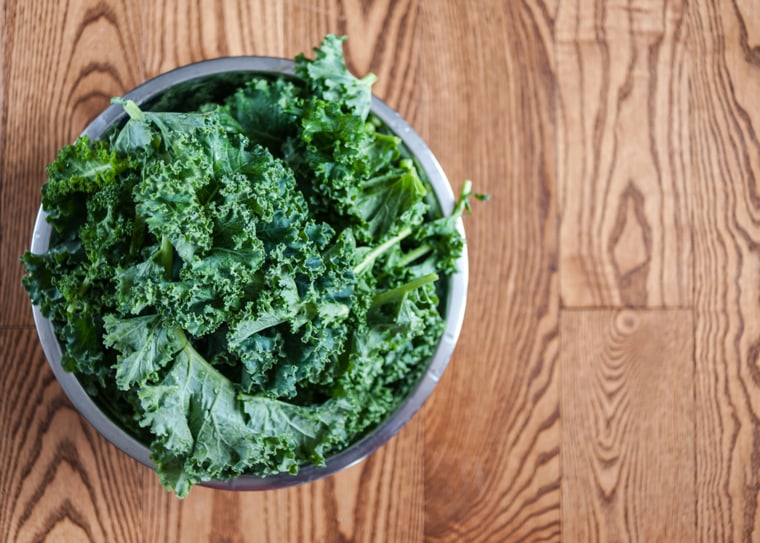If you’re worried about adding kale to your morning smoothie, salad or side dish, you can relax. Over the last week, a “toxic kale” theory has been going viral after an article warned that the popular leafy vegetable was associated with a variety of medical ailments. It’s time to separate fear from fact on the health benefits of kale.
As a member of the cabbage family, kale is low in calories (about 30 calories in one cup) and rich in nutrients and minerals, especially vitamin A, C and K. It’s also a good source of folic acid, lutein, fiber, and even some calcium and protein. Consumed for thousands of years, it’s been a health plus for millions of eaters throughout the world.
More recently, kale in all forms — curly, flat, purple, green and baby — has become superfood No. 1, far surpassing its hipster foodie status to becoming a fast food menu item. So it's not surprising to see some embrace a kale backlash.
Numerous web articles, including a Mother Jones story “Sorry, Foodies: We’re About to Ruin Kale," have reported on some anecdotal evidence offered by an alternative medicine researcher at a California clinic. The researcher found that thallium (a heavy metal) was detected in a few people who were heavy consumers of kale, and made an association between his patients’ kale consumption and a variety of medical ailments.
His conclusion was that these symptoms were connected to the impact that trace amounts of thallium detected in some kale samples had on the body. He observed that the people also had a higher than expected level of thallium in their urine.
Thallium is metal found in trace amounts in soil and minerals, according to the Centers for Disease Control and Prevention.
The report went quickly viral — maybe sparked by a backlash from kale haters? — with some fear-mongering headlines proclaiming “People are getting seriously sick from eating loads of kale” or “Is Eating Too Much Kale Poisonous?”
Sorry, kale haters. The link is not based on a rigorous scientific report.
It’s essential to point out that the original report was in a web magazine, not a scientific journal which is subject to peer review by other scientists. A scientific review includes a careful evaluation of how the findings and conclusions were made. Certain factors are critical before an evidence-based conclusion can be made, such as: how many people were in a study; how well controlled were other factors; how much kale was consumed and for how long; how much thallium was in the kale; and how much thallium was in the urine are all key questions.

These are the kind of factors that separate an opinion piece from a valid scientific observation.
It is a fact that kale and other leafy vegetables of the cruciferous Brassica family (like cabbage, broccoli and cauliflower) can absorb thallium from the soil. Many other vegetables can also absorb thallium, including green cabbage, turnips, radishes and watercress.
But the ability for a plant to absorb traces of a chemical does not automatically make it harmful to your health. And even finding measurable amounts of thallium in someone’s urine doesn’t imply that the thallium is causing an adverse health effect, according to the CDC.
Take a look at the case of arsenic and apple juice.
A major scare occurred with the detection of arsenic in apple juice. Traces of arsenic were found in some juices, but far below the limit of levels deemed safe by expert scientific review groups working with government agencies who work together to monitor soil safety, like the EPA and the USDA. Apples remain a safe and nutrient-rich part of the food supply.
Is there a lesson to be learned from this?
Plants grow in soil, and the quality of the soil is reflected in the nutrient profile of the resulting vegetable or fruit. This is a well known fact for growers, and one that consumers should recognize as well. Growers must continue to be vigilant in monitoring the quality of their soil, for both nutrients and any level of potential contaminants.
And what about consumers? Eat your kale — and include lots of other colorful fruits and vegetables. As with all things in nature, moderation and variety is key for optimal health.
Madelyn Fernstrom is TODAY's nutrition and health editor. Follow her @drfernstrom